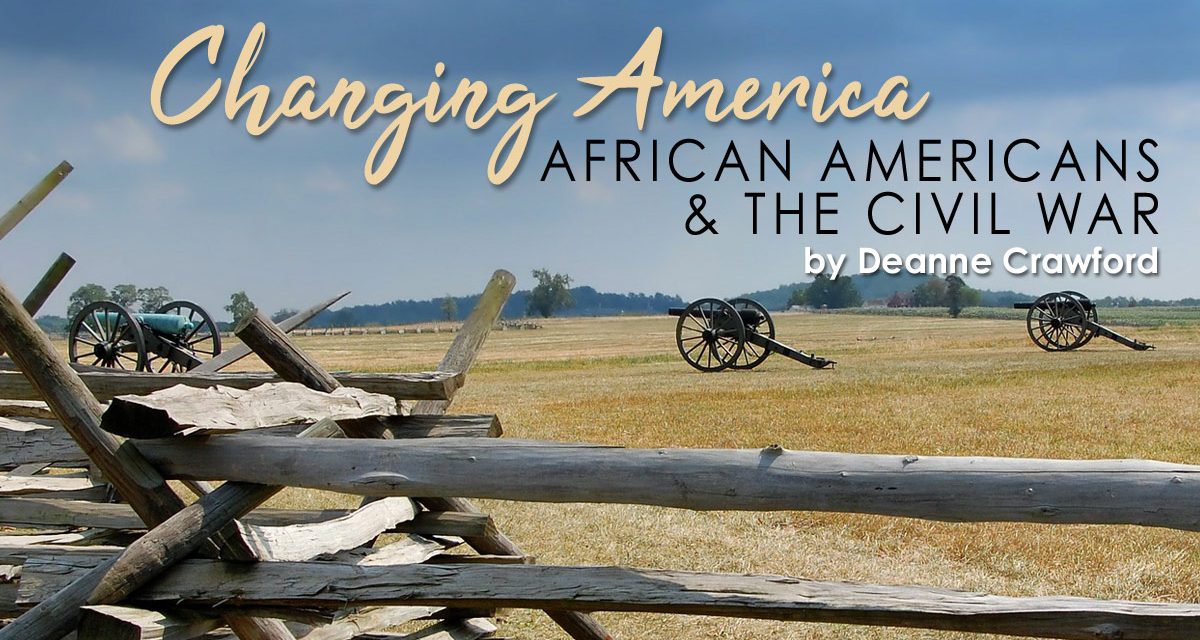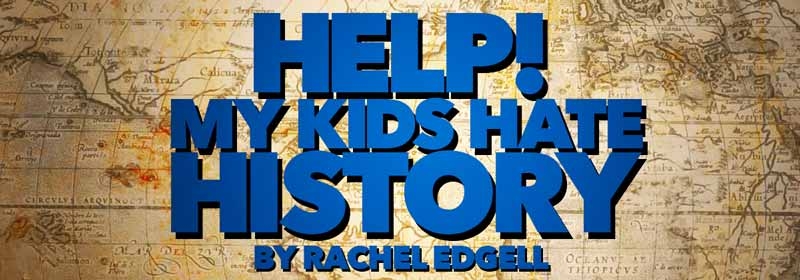Much has been written to teach children the legacy of African American men and women. Today, however, we want to honor those whose impact was greatest during the tumultuous American Civil War. Often called the War Between the States, the Civil War lasted 4 years, from 1861-1865. Surprisingly, the effects of this war may still be felt today. Follow the included links to child friendly videos and web sites to learn more.
The American Civil War was a complex and heartbreaking time in our country when new ideologies rose up to challenge the status quo, and brother fought against brother. While our intent is not to delve into the war itself, children can learn more about this tragic time at the Duckster’s History of the Civil War, which provides a detailed look for children of all ages. Older children may also find the Encyclopedia Britannica’s Why They Fought beneficial to understanding the many questions we find ourselves asking over 100 years later.
By the end of the Civil War it is estimated that 186,000 African Americans fought for their freedom in the Union army with an additional 30,000 in the Union navy. Interestingly, an estimated 3,000-6,000 African Americans were a part of the Confederate army (although this number is difficult to confirm as few records were kept). African American men volunteered to join the Union Army from beginning of the war; however, it was not until the Emancipation Proclamation of 1863 that they were recruited. In the Confederate states, Southern leaders permitted African American soldiers to join in 1865, to meet the desperate need for soldiers. That is not to say that there were no African Americas in the Confederate Army until that time. African American men were vital to the Confederate efforts and were often forced to accompany their masters to the battlefields to serve as laborers and cooks. Some even chose or were forced to defend themselves or others. Little is known about the valiant African American men in the Confederacy, so our study will focus the brave soldiers of the Union Army. The American Battlefield Trust has an excellent overview of the African American Soldier in the Civil War.
Let’s meet the first African American Civil War soldier to earn the Medal of Honor. Considered the highest military award provided by the United States, it is awarded for acts of valor in defense of the United States of America. Awarded to Sergeant William Carney, a flag-bearer in Company C of the 54th Massachusetts Infantry, the Medal of Honor was not officially given to him until 1900. William Carney was born into slavery in 1840. Escaping slavery through the Underground Railroad, his father William, Sr., earned enough money to buy freedom for his family. Reunited, the family moved to New Bedford, Massachusetts, where Carney felt called to be a minister. Instead of following the call to preach he decided to enlist in the Union Army in 1863, following the Emancipation Proclamation. It has been said that he remarked, “Previous to the formation of colored troops, I had a strong inclination to prepare myself for the ministry; but when the country called for all persons, I could best serve my God serving my country and my oppressed brothers. The sequel in short—I enlisted for the war.” Carney soon rose to the rank of sergeant due to his education and leadership. His gallant efforts at preserving the flag and leading the remaining members to safety earned him the Medal of Honor, which was celebrated in song. After the war, he returned home, married, and worked for the city, the post office and state department shortly before his death in 1908. Children may enjoy learning about the postal system from letter pick up to distribution center to receiver.
The first African American Civil War soldier to actually receive the Medal of Honor was Robert Blake. Born into slavery, his owner’s plantation was burned during a Union naval expedition up the Santee River. About 400 escaped slaves, including Blake, were taken onto Union ships and sent to North Island in Winyah Bay. Upon arriving at North Island, he answered the call for single men to serve on the USS Vermont. He later transferred to the USS Marblehead serving as a steward. While in the Stono River, the Marblehead came under fire from a Confederate howitzer at Legareville on John’s Island. Blake went to the ship’s gun deck where he was knocked down by an exploding Confederate shell. Since he did not have an assigned combat role, he could have retreated to safety, but instead he chose to man the gun. He ultimately was promoted to Seaman and received the Medal of Honor for his heroic actions. Seaman Blake re-enlisted in the Navy and served another tour on the USS Vermont. Sadly, his life after the second tour is unknown.
Our final Civil War hero was the first African American Civil War Nurse, Susie King Taylor. Born a slave in Georgia, she was allowed to move in with her grandmother as young child, where she was taught to read and write. This skill became valuable to her as she joined her husband, Sargent Edward King and the 33rd Colored Regiment. Her primary role was to provide care for wounded soldiers, but she also served as cook and laundress. When duties were completed, she was known to spend free time teaching the soldiers in her regiment to read and write. While she never received any rewards for her acts of service, her contributions are worth celebrating. After the war, she wrote her memoirs and is known as the only African American Woman to write of her Civil War experiences. You may wish to spend time learning about Civil War medicine and the nurses.
I appreciate you joining our celebration of the significant contributions made by African Americans during the Civil War. As time allows, I encourage you to learn more about the impact of African Americans on our country. The Library of Congress offers excellent teaching resources. ~ Deanne
Much has been written to teach children the legacy of African American men and women. Today, however, we want to honor those whose impact was greatest during the tumultuous American Civil War. Often called the War Between the States, the Civil War lasted 4 years, from 1861-1865. Surprisingly, the effects of this war may still be felt today. Follow the included links to child friendly videos and web sites to learn more.
The American Civil War was a complex and heartbreaking time in our country when new ideologies rose up to challenge the status quo, and brother fought against brother. While our intent is not to delve into the war itself, children can learn more about this tragic time at the Duckster’s History of the Civil War, which provides a detailed look for children of all ages. Older children may also find the Encyclopedia Britannica’s Why They Fought beneficial to understanding the many questions we find ourselves asking over 100 years later.
By the end of the Civil War it is estimated that 186,000 African Americans fought for their freedom in the Union army with an additional 30,000 in the Union navy. Interestingly, an estimated 3,000-6,000 African Americans were a part of the Confederate army (although this number is difficult to confirm as few records were kept). African American men volunteered to join the Union Army from beginning of the war; however, it was not until the Emancipation Proclamation of 1863 that they were recruited. In the Confederate states, Southern leaders permitted African American soldiers to join in 1865, to meet the desperate need for soldiers. That is not to say that there were no African Americas in the Confederate Army until that time. African American men were vital to the Confederate efforts and were often forced to accompany their masters to the battlefields to serve as laborers and cooks. Some even chose or were forced to defend themselves or others. Little is known about the valiant African American men in the Confederacy, so our study will focus the brave soldiers of the Union Army. The American Battlefield Trust has an excellent overview of the African American Soldier in the Civil War.
Let’s meet the first African American Civil War soldier to earn the Medal of Honor. Considered the highest military award provided by the United States, it is awarded for acts of valor in defense of the United States of America. Awarded to Sergeant William Carney, a flag-bearer in Company C of the 54th Massachusetts Infantry, the Medal of Honor was not officially given to him until 1900. William Carney was born into slavery in 1840. Escaping slavery through the Underground Railroad, his father William, Sr., earned enough money to buy freedom for his family. Reunited, the family moved to New Bedford, Massachusetts, where Carney felt called to be a minister. Instead of following the call to preach he decided to enlist in the Union Army in 1863, following the Emancipation Proclamation. It has been said that he remarked, “Previous to the formation of colored troops, I had a strong inclination to prepare myself for the ministry; but when the country called for all persons, I could best serve my God serving my country and my oppressed brothers. The sequel in short—I enlisted for the war.” Carney soon rose to the rank of sergeant due to his education and leadership. His gallant efforts at preserving the flag and leading the remaining members to safety earned him the Medal of Honor, which was celebrated in song. After the war, he returned home, married, and worked for the city, the post office and state department shortly before his death in 1908. Children may enjoy learning about the postal system from letter pick up to distribution center to receiver.
The first African American Civil War soldier to actually receive the Medal of Honor was Robert Blake. Born into slavery, his owner’s plantation was burned during a Union naval expedition up the Santee River. About 400 escaped slaves, including Blake, were taken onto Union ships and sent to North Island in Winyah Bay. Upon arriving at North Island, he answered the call for single men to serve on the USS Vermont. He later transferred to the USS Marblehead serving as a steward. While in the Stono River, the Marblehead came under fire from a Confederate howitzer at Legareville on John’s Island. Blake went to the ship’s gun deck where he was knocked down by an exploding Confederate shell. Since he did not have an assigned combat role, he could have retreated to safety, but instead he chose to man the gun. He ultimately was promoted to Seaman and received the Medal of Honor for his heroic actions. Seaman Blake re-enlisted in the Navy and served another tour on the USS Vermont. Sadly, his life after the second tour is unknown.
Our final Civil War hero was the first African American Civil War Nurse, Susie King Taylor. Born a slave in Georgia, she was allowed to move in with her grandmother as young child, where she was taught to read and write. This skill became valuable to her as she joined her husband, Sargent Edward King and the 33rd Colored Regiment. Her primary role was to provide care for wounded soldiers, but she also served as cook and laundress. When duties were completed, she was known to spend free time teaching the soldiers in her regiment to read and write. While she never received any rewards for her acts of service, her contributions are worth celebrating. After the war, she wrote her memoirs and is known as the only African American Woman to write of her Civil War experiences. You may wish to spend time learning about Civil War medicine and the nurses.
I appreciate you joining our celebration of the significant contributions made by African Americans during the Civil War. As time allows, I encourage you to learn more about the impact of African Americans on our country. The Library of Congress offers excellent teaching resources.
~ Deanne





